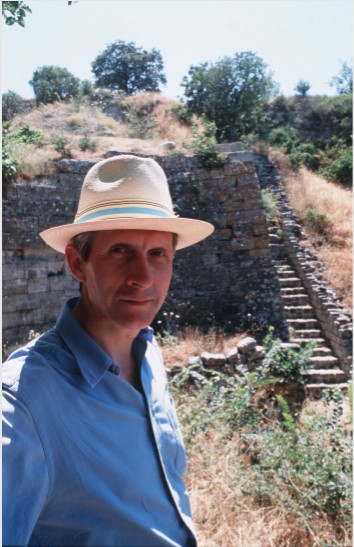May 26, 2020
The Archaeological Institute of America (AIA) awarded more than $380,000 in grants to 36 archaeological projects around the world. The grants will support excavation, analyses, and research in over a dozen countries, site preservation in Egypt, several publications, and provide seven students with the opportunity to participate in their first field project.
Many of these grants, including those listed below, were made possible thanks to the generosity of our donors. These endowed grants allow the AIA to support both aspiring scholars and archaeologists in the field and in the dissemination of their research. Thanks to the support of our donors we can continue to promote archaeological study today, and in the years to come.
The Kathleen and David Boochever Endowment Fund for Fieldwork and Scientific Analyses grant was awarded to Caroline Cheung, Assistant Professor in the Department of Classics at Princeton University in Princeton, NJ. The $4,000 award will be used to study ancient ceramic storage vessels (dolia and pithoi) and identify what was stored in them. The vessels were used to prolong the shelf life of food and to protect it from pests, fluctuating temperatures, and humidity. Also, because the vessels were expensive, many of them feature ancient repairs executed in metal. The study will identify the metals used for the repairs which in turn will tell us about the value of the vessels and the skills of the repairer.
A grant from the Julie Herzig Desnick Endowment Fund for Archaeological Field Surveys was awarded to Sarah James, Assistant Professor in the Department of Classics at the University of Colorado Boulder. The $4,350 grant will support a new archaeological project on the Adriatic island of Brač in the Dalmatian region of southern Croatia. James and her team will conduct an intensive pedestrian survey, in conjunction with geophysical work and targeted excavation, focused on three areas that were located but not investigated 25 years ago. James’ work will yield new data that will allow us to better understand Dalmatia’s role in the wider Mediterranean region.
Two awards were made from the Richard C. MacDonald Iliad Endowment for Archaeological Research to Bonna Daix Wescoat, Samuel Candler Dobbs Professor of Art History and Full Professor of Greek Art and Archaeology at Emory University and to Donald Easton, an independent scholar connected to archaeological research at the site of Troy.
Wescoat and her team were awarded $12,000 to investigate both the legendary and physical connections between Samothrace and Troy. The Samothrace Exploration Project, in conjunction with American Excavations Samothrace, will shed light on occupation and land use on Samothrace from the third to first millennium BCE, and its relationship to contemporary human activity in the Troad, northern Aegean, and Balkan hinterland. The project includes a LiDAR survey of the area’s rugged and often wooded landscapes that should reveal evidence of the Late Bronze Age across the entire island.

Easton will use an $8,000 award to undertake radiocarbon dating of 26 samples of animal bone selected from two tons of specimens taken from the Troy excavations of 1932-38 and now preserved in the Osteo-Archaeological Research Laboratory at the University of Stockholm. The results will help determine whether there was a 170-year gap between Troy III and Troy IV and, consequently, whether a hypothesized intervening “Proto-IV” period existed. The project will also determine whether consequent late dates for Troy IV and V, of c. 2000-1750 BC, are correct.
An award from the Ellen and Charles Steinmetz Endowment Fund for Archaeology was awarded to Elizabeth Cory Sills, Assistant Professor in the Department of Social Science at the University of Texas at Tyler. The $5,500 grant will be used for chemical soil testing at the Placencia Lagoon Salt Works (PLSW) in Belize to identify areas of activity and habitation. The PLSW are part of an extensive ancient Maya Classic period (AD 300-900) salt industry that extended along the coast of Belize. The project will compare data from PLSW’s dry land sites with the results from an earlier study at the submerged salt works discovered at Paynes Creek to create a process for detecting otherwise “invisible” salt making structures, especially in places that lack preserved wooden architecture.
Our congratulations to this year’s grant recipients!